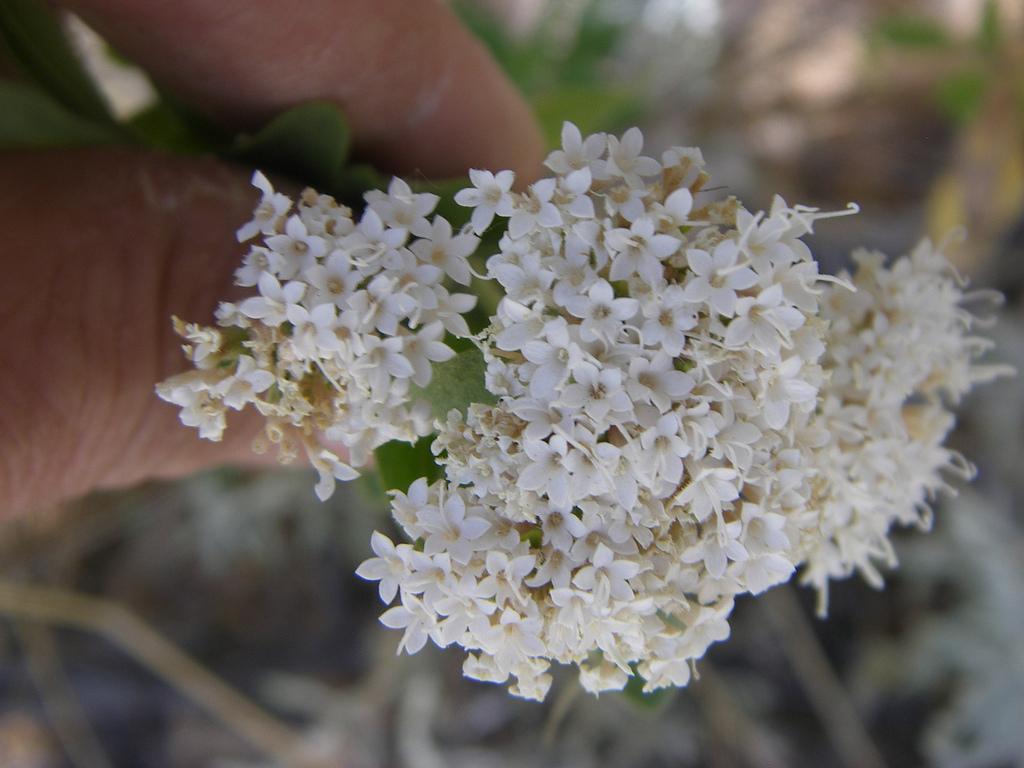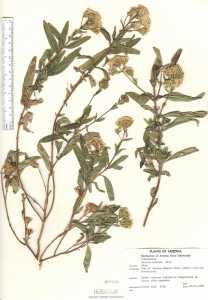
|
|
|
|
Family: Asteraceae
Lemmon's Candyleaf, more...Lemmon stevia
|
Shrubs or subshrubs, 40-100 cm. Leaves opposite; petioles (0-)3-6 mm; blades elliptic-oblong to lance-elliptic, 3-8 cm, margins serrate or entire. Heads in ± congested, compact clusters. Peduncles 0 or 1-2 mm, hir-sutulous. Involucres 5-6 mm. Phyllaries densely stipitate-glandular and sparsely villous to hispid, apices acute. Corollas white, lobes hispidulous. Pappi coroniform (scales shorter than corollas). Flowering (Feb-)Apr-May(-Sep). Rocky slopes, road cuts, streamsides, oak-juniper, pine-oak, and cottonwood-sycamore woodlands; 900-1700 m; Ariz.; Mexico (Chihuahua, Sinaloa, Sonora). Stevia hispidula (Grashoff) B. L. Turner, based on S. lemmonii var. hispidula Grashoff, is illegitimate; it is a later homonym of S. hispidula de Candolle.
FNA 2006, Kearney and Peebles, 1979 Common Name: Lemmon's candyleaf Duration: Perennial Nativity: Native Lifeform: Subshrub General: Shrubs or subshrubs, to 1 m, leaves bright green, fragrant, sweet to taste. Leaves: Opposite, lanceolate to elliptic, 3-8 cm, margins serrate to entire. Flowers: Heads in dense umbels, corollas white, involucres 5-6 mm, phyllaries densely dotted with glands, and sparsely villous to hispid, with acute apices. Pappi arranged in a crown-like shape. Fruits: Thin achenes with a pappus of awns, scales, or both, sometimes reduced to a toothed crown. Ecology: Found in rocky areas on slopes, roadcuts, and streamsides, in pine-oak and oak-juniper woodlands, also in cotton-sycamore woodlands, from 3,000-5,500 ft (900-1700 m); flowers April-May. Notes: This plant has a wonderful aroma and flavor, you are lucky if you find it, can be distinguished by the white flowers, where S. serrata has purplish flowers and the leaf margins are serrate. Ethnobotany: Unknown Etymology: Stevia is named for the Spanish botanist Pedro Jaime Esteve (d. 1566), while lemmonii is named for Gil and Sara Lemmon, botanists collecting in the southwestern US, the people for whom Mt. Lemmon in the Catalina Mountains north of Tucson was named. Synonyms: None Editor: LCrumbacher, 2011 |
This project was made possible in part by the Institute of Museum and Library Services [MG-70-19-0057-19].
Powered by Symbiota




